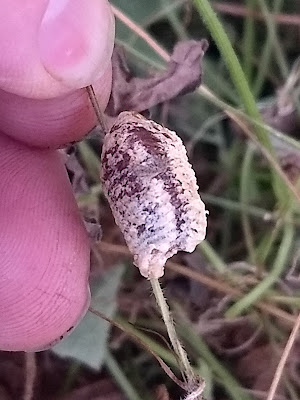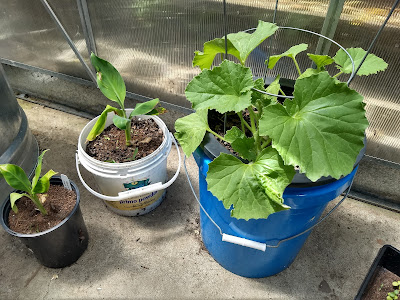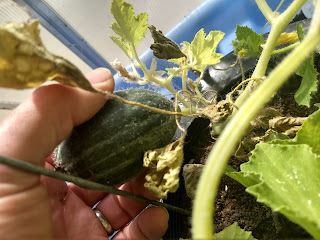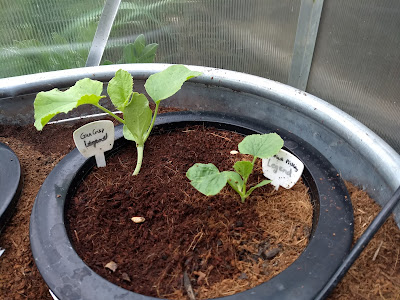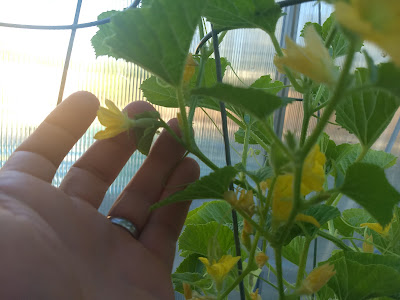Friday, March 4, 2022
Ladybugs
Friday, February 25, 2022
Mantids Mantids Everywhere
Friday, February 18, 2022
Emanuele Larosa’s primarily Dark Carosello Leccese
Friday, February 11, 2022
SeedSelect Strikes again with a Spotted Spuredda Leccese
Of all the Italian seed companies I have acquired seed from SeedSelect has to be the most mixed-up of them all. In all the times I have grown their varieties, I honestly don’t recall ever getting a fruit that looked exactly like what was on the label. Sometimes this can be extremely frustrating. If I were a regular gardener, this kind of inconsistency would drive me crazy. However, if there is sufficient biological deviance, beautiful things can happen.
My friend Giuseppe grew out a Carosello Barese several years ago that had flecked dark spots on them. While the fruit was beautiful, we were unfortunately not able to save the seed – even after I tried growing out many seeds from the same packet. For all I knew, the flecked Carosello Barese was lost to the world.
Given that there is generally a high level of variability with carosello cucumbers and given that I had observed some really off-type cucumbers from SeedSelect before, I decided to try growing out the Spuredda Leccese SeedSelect once again. Not knowing that I could produce anything like my friend’s flecked Leccese, I planted a couple more seeds of this variety and hoped for the best.
Imagine my delight when I began seeing flecks on the skin. I was so very happy. While in gardening, I have come to better understand the carosello and other immature C. melo cultivars, this was just an incredibly fortunate tender mercy. I was both surprised an honored by the gift of a second chance. I did all I could to save the seed and pass it on to my friend, Giuseppe.
While there is still a possibility that my friend and I could lose the speckled or flecked Spuredda Leccese again, I truly hope that we can preserve it to be enjoyed by future generations.
Friday, February 4, 2022
The Bitter Truth about Asian Pickling Melons
Occasionally I do variety trials. One of the variety trials I decided to conduct was a pickling melon variety trial. For this one, I grew out all of the pickling melons that I could find and grew them out to their first true set of leaves. Then I tasted the leaves for bitterness. All but two of the pickling C. melo varieties that I grew had very bitter leaves (a clear indication that bitter fruit would follow). So I only grew those varieties out for a short while.
The least bitter pickling melons were spared and grown until they were much larger. At this point, I tasted the leaves and stems and found them to be bitter, so I pulled them too.










